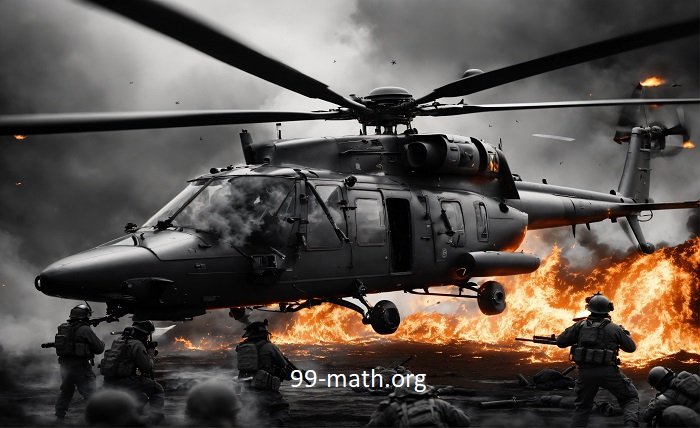Introduction
With their ability to provide live coverage of breaking news, traffic reports, and weather updates from unusual vantage points, news helicopters are indispensable tools in today’s media environment. But there are risks associated with aerial journalism as well as its advantages. Tragic incidents involving news crews and helicopter crashes highlight the risks taken by individuals who provide the public with real-time news. This extensive blog post explores the many facets of Action News Helicopter Crashes, including their origins, the effects they have on journalism, and the safety precautions put in place to stop them.
History of News Helicopters
Action News Helicopter Crashes have been used in news reporting since the 1950s, when Los Angeles television stations started using them for breaking news and traffic updates. News reporting was transformed by the capacity to quickly reach accident scenes, natural catastrophes, and other noteworthy occurrences. As a result, aerial imagery became a standard feature in news broadcasts. These aerial vehicles have made invaluable contributions, but they have also been involved in a number of accidents, which has sparked ongoing conversations about risk management and safety.
Notable Helicopter Crashes in News Reporting
Over the years, a number of well-known Action News Helicopter Crashes have drawn attention from the media. One such instance happened in 2007, when four journalists were killed in a collision between two news helicopters that were covering a police pursuit in Phoenix, Arizona. In 2018, a news photographer’s helicopter fell into the East River in New York City, killing all five individuals inside. This was another sad tragedy. The possible risks of employing helicopters for news reporting are brought to light by these instances.
Common Causes of Helicopter Crashes
Numerous things, such as mechanical failure, pilot error, unfavorable weather, and bird strikes, can cause Action News Helicopter Crashes. Mechanical problems, including rotor problems or engine problems, might have disastrous results. Another important reason is pilot error, which is frequently caused by poor judgment or inexperience. Strong winds, heavy rain, or fog can all have a significant impact on a helicopter’s performance and safety. Furthermore, bird strikes have the potential to seriously damage objects and trigger crashes.
Impact on Journalism
Action News Helicopter Crashes have a significant effect on the journalism industry. For news organizations, losing seasoned reporters and photographers may be a serious setback. Concerning the risks involved in delivering news, these crashes also bring up ethical issues. For media organizations, striking a balance between delivering impactful, timely news coverage and guaranteeing the safety of news crews is a never-ending task. Furthermore, the public is frequently drawn to these tragedies and recommendations for stronger safety measures are made.
Regulatory Oversight and Safety Standards
Action News Helicopter Crashes activities in the US are governed by the Federal Aviation Administration (FAA), which also oversees news reporting helicopters. The FAA has put in place extensive safety regulations and guidelines in an effort to reduce the risks involved in helicopter flying. These include of specifications for operational processes, maintenance protocols, and pilot training. Accidents continue to happen in spite of these laws, highlighting the necessity for ongoing advancements in safety protocols.
Advances in Helicopter Technology
Innovations in technology have been helpful in improving helicopter safety. Contemporary helicopters are furnished with sophisticated avionics, enhanced communication instruments, and collision prevention systems. These tools assist pilots in navigating difficult situations and avoiding possible dangers. In addition, helicopter performance and overall safety have improved with the development of stronger materials and more dependable engines.
Training and Action News Helicopter Crashes
Helicopter safety is greatly dependent on pilot training. Thorough training programs including emergency protocols, weather navigation, and mechanical systems are required of pilots before they can operate a helicopter. Pilots seeking certification must show that they are proficient in both theoretical and practical skills. Recurrent training and ongoing education are also necessary to keep pilots abreast of the most recent developments in technology and safety procedures.
Future of Aerial News Reporting
Drones have the potential to Action News Helicopter Crashes as the primary tool for aerial news gathering in the future since they can provide many of the advantages of helicopters without the hazards. Because they can be controlled remotely and produce excellent aerial imagery, drones can operate in hazardous environments without the need for human intervention. But the adoption of drone technology also brings with it new safety and regulatory issues that need to be resolved.
Conclusion
Tragic examples of the inherent risks in aerial journalism are Action News Helicopter Crashes. Even though technology, training, and safety rules have advanced significantly, ongoing efforts are needed to better improve the safety of news helicopter operations. It is the media industry’s responsibility to better protect people who put in a great deal of effort to enlighten the public by comprehending the causes and effects of these catastrophes and putting strong safety measures in place.
FAQ
What are the main causes of helicopter crashes in news reporting?
The primary causes include bird strikes, bad weather, pilot error, and mechanical failure.
How has technology improved the safety of news helicopters?
Helicopter safety has been greatly increased by developments in avionics, collision avoidance systems, better communication tools, and more dependable engines.

